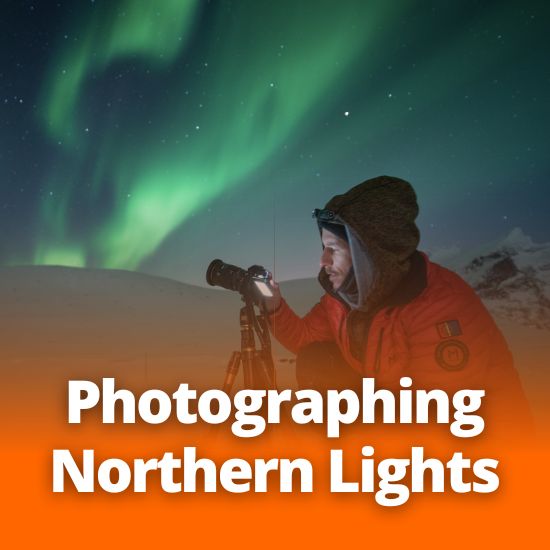
Photographing the Northern Lights
Now that you know where to go how can you capture them?
Professional photographers will spend thousands of dollars to travel to our backyard just to capture the aurora borealis, but that doesn’t mean you need to be a pro to grab a good shot to blow up and put on your living room wall (or use as a phone wallpaper, you do you).
But before we get into that, we will let you know that Alberta absolutely ROCKS! So there’s an active Alberta Aurora Chases Facebook group that can help you know when and where to see the lights. And remember, you’re not the only one out there; Edmonton hosts a chapter of the Royal Astronomical Society of Alberta that has a dark sky etiquette available to follow so everyone has a good time.
And remember to dress warm and bring a thermos of hot chocolate when you head north! You might be out there for a while to get the perfect shot, so prepare to get cozy and be patient.
Location:
Remember that a clear dark sky is step one. Check your weather report and get to a low light pollution area further north for your best chance.
Equipment:
Second, you will need an actual camera. Your iPhone is not gonna cut it if you want really nice pictures, although some have had success with a dark mode setting. A DSLR camera is optimum and ideal; either way you will also need a tripod to avoid blurring.
- You’ll be manually controlling various settings
- Use a wide-angle lens (if possible)
Camera Settings:
- Turn your aperture as low as possible (F4, or F2.8 if you can), this will let in as much light as possible
- Adjust your ISO, starting with 3200-6400.
- Change the white balance to “daylight,” and your shutter speed to 5-15 second exposure.
Take a few shots this way, and then adjust as necessary.
- If you’re shooting a very bright aurora you’ll reduce your ISO and/or shutter speed accordingly.
Tips:
- For added dimension and visual interest, focus your camera on a close physical element, like a person, tree, vehicle, etc. For the sky alone, focus on the brightest star or planet you can see.
- Having a cable release will allow you to take a shot remotely, and help keep the camera stable avoiding blur. If you don’t have a cable, you can also use a timer mode to reduce vibrations during a shot.
- Reducing vibrations is crucial when you have a longer shutter speed as jostling the camera will be more noticeable during the extended exposure.
Hopefully with these tips you’ll be capturing visual wonder in no time!